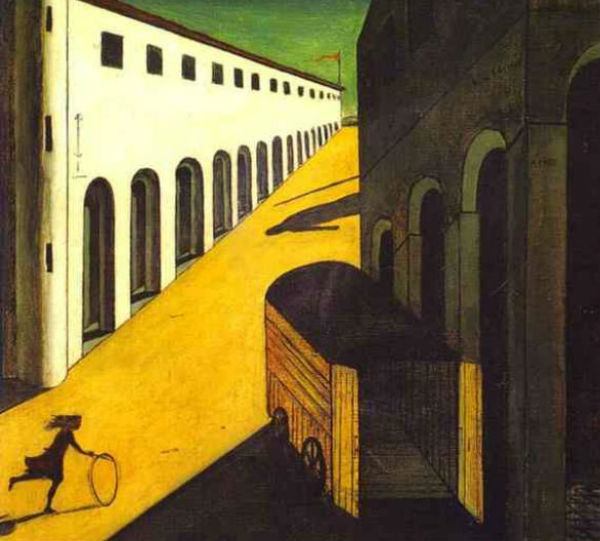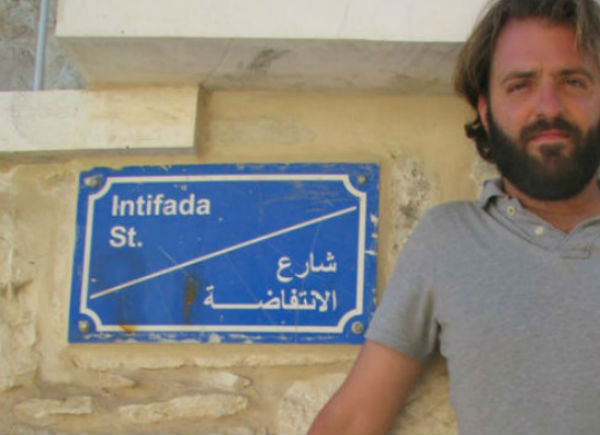On the stage was a girl, not 20 years of age, with a pistol to her head. “A gun hanging on the wall in the first act will go off in the third” is Chekhov’s brilliant tip-turned-clichee, but in a play dealing with Israeli/Palestinian realities it needn’t even hang on the wall literally. A gun hangs on the wall always, and every shot echos for decades.
The shot in this case served as climax in “A Railroad to Damascus” a new play at Israel’s national theatre, “Habima.” The play was written by Hillel Mittlepunkt, an esteemed Israeli playwright in his early 60s and its action takes place in Haifa during the early forties.
Near the closing of the final act, a group of militants with extremist Zionist organization “Lehi” is shown assassinating a young Jewish girl who was rumored to be dating a British officer. I left the theatre shocked and began to conduct an amateur historical research into the matter. Were such murders indeed committed? Older people who have witnessed the turbulent Forties seemed a bit surprised by my question. Why even ask? Of course they were. The Lehi (or “Stern Gang”) famously killed Jewish girls for dating Brits.
How to stomach this? When I was a child in the 80s, former Lehi commander Itzhak Shamir was my country’s prime minister. Not only this, but one of my best friends is to this day the grandson of the Lehi’s legendary (or infamous, depending on your politics) founder Avraham Stern. His family is known as the “fighting family” and while he doesn’t hold on to reactionary political views, his last name remains a source of pride.
Most strikingly: “Lehi” was the name of a major street in the Jerusalem neighborhood in which I spent my childhood. Following the rise of the Israeli right to power in 1977, pre-statehood terrorist organizations quickly became canonized in an effective manner. I decided to return to the map of my neighborhood and find what other groups and individuals were chosen to adorn its street signs, and what have I learned about them over the years that passed.
Where the sidewalk ends
French Hill, located on the range of hills encircling Old Jerusalem from the north and east, is not just any other Jewish neighborhood in Jerusalem. It is an East Jerualem settlement, having been built after the 1967 war on land conquered in that campaign.
During the eighties, French Hill was hardly an ideological settlement, most of its residents were academics working and studying at the nearby Mt. Scopus campus of the Hebrew university, but political capital was gained by the very existence of a Jewish community right on the Ramallah-Jerusalem road, separating the villages of Issawiyah and Annatah from that road and from the refugee camp of Shua’afat (I only found out about the existence of this refugee camp when in my 20s, many years after leaving the neighborhood).
French Hill itself was a pleasant place. The apartment blocks typical to Israeli urban-scape look much better when coated with brown Jerusalem stone. The main cluster of blocks was surrounded by a single ring of streets, allowing the space between the buildings to be taken up by greenery and pedestrian pathways. This was a perfect place to be a child or a worry-free parent.
The street on which lived – my worry-free parents and I – was Etzel Street. The Etzel (or “Irgun“) was a terrorist organization responsible most famously for the bombing of the King David hotel in Jerusalem, an attack which left 91 people dead, more than any single terrorist operation carried out by Hamas.
The Etzel, which targeted on the British as its enemy, bombed busses and buildings, planted explosives in Arab markets (one such bomb, in 1938, claimed over 70 lives in Haifa) and performed individual murders. Its people are responsible for the Deir Yassin Massacre of 1948, in which over 100 Palestinian villagers were murdered, among them women and children.
We didn’t always live on Etzel street. My family’s first apartment in the neighborhood was on leafy Bar Kokhba street. While much less contemporary, the figure of Bar Kokhba is extremely controversial and in a Zionist political context can be seen as highly provocative. Bar Kokhba was a 2nd century false messiah, who organized an armed rebellion on the Roman legion, causing enormous damage to the Jewish community in the holy land.
How are Bar Kokhba and the Lehi related? They both represent a deeply violent approach to regional politics. My childhood neighborhood was an enormous advertisement to violence.
He was a hero, he called for liberty
Another common denomanator would be myth. Just as the Stern gangsters were described as freedom fighters without flaw to my elementary school self, so was Bar Kokhba depicted as a national hero. The holiday of Lag Ba’omer, on which I was born, is dedicated to his figure. On this day Israeli children sing a song in which Bar Kokhba is described riding a lion. The refrain goes: “He was a hero / He called for liberty / The whole nation loved him /He was a hero.”
It took some looking into history to realize what a disaster that “hero” brought (according to Roman historian Cassius Dio, 580,000 Jews died in the course of the revolt). It took a theatre piece put together by clear sighted artists and boldly produced by the national theatre to challenge the myth of Lehi.
Life in Israel is an endless task of breaking up the locks to boxes holding myths. Sometimes the contents of the box are amusing (French Hill itself, for example, appears not to have been named after anything Francais, but after John French, a British officer who took part in the 1917 Jerusalem campaign). Sometimes it’s revealed to be a can of Pandoran worms.
The issue of street names in Israel is a complex and fascinating one. In many cases Zionist street names can be seen as less controversial and more legitimate. There are actual heros commemorated in the street of French Hill. One street is named after the rebels of the Warsaw Ghetto, another is named for other Partisans of WWII. Another street in the neighborhood is named after the “Haganah,” an armed Zionist organization and predecessor of the IDF that is less known to have used actual terrorist techniques.
However, many street names in the older cities were changed after 1948 and given deliberately provocative Zionist names. At least two streets in Israel (in Ashkelon and Or Yehuda) are named after preacher of racism, Rabbi Meir Kahane, but more subtle choices carry nearly as much charge. Butrus St., one of the major streets of Jaffa, was renamed Raziel St. after David Raziel, the fourth commander of the Etzel. To the best of our knowledge, Kahane never directly killed a human being. Raziel has, and he is known for shifting the focus of the “Irgun” from actions against the British to retaliatory terrorist acts against Arabs.
Deeper in Jaffa, in neighborhoods where nearly only Arabic is spoken, the streets have mostly been named after East European rabbis, or given such whimsical names as “Lovers of Israel Street.” The residents of these neighborhood have less iconoclastic toil ahead of them. They can hardly be expected to care much who the Rabbi from Kutzk is, and love for Israel doesn’t come easy when the border patrol policemen roll through your neglected, dirty neighborhood, yelling at you and abusing you.
For us Israelis, who grew up in the twilight between truth and fiction, the challenge is daily. I can only wish that Palestinians soon to be born on similarly named streets in an independent state of Palestine, will be somehow inspired in years to come, whether by works of art or by simple love of peace, to give violent street signs a second glance.



